Historically weird rules Australian school teachers once abided by
If you thought Australian schoolkids had it tough back in the day, spare a thought for their poor teachers, who were forced to abide by a seriously bizarre list of strict rules and wacko regulations
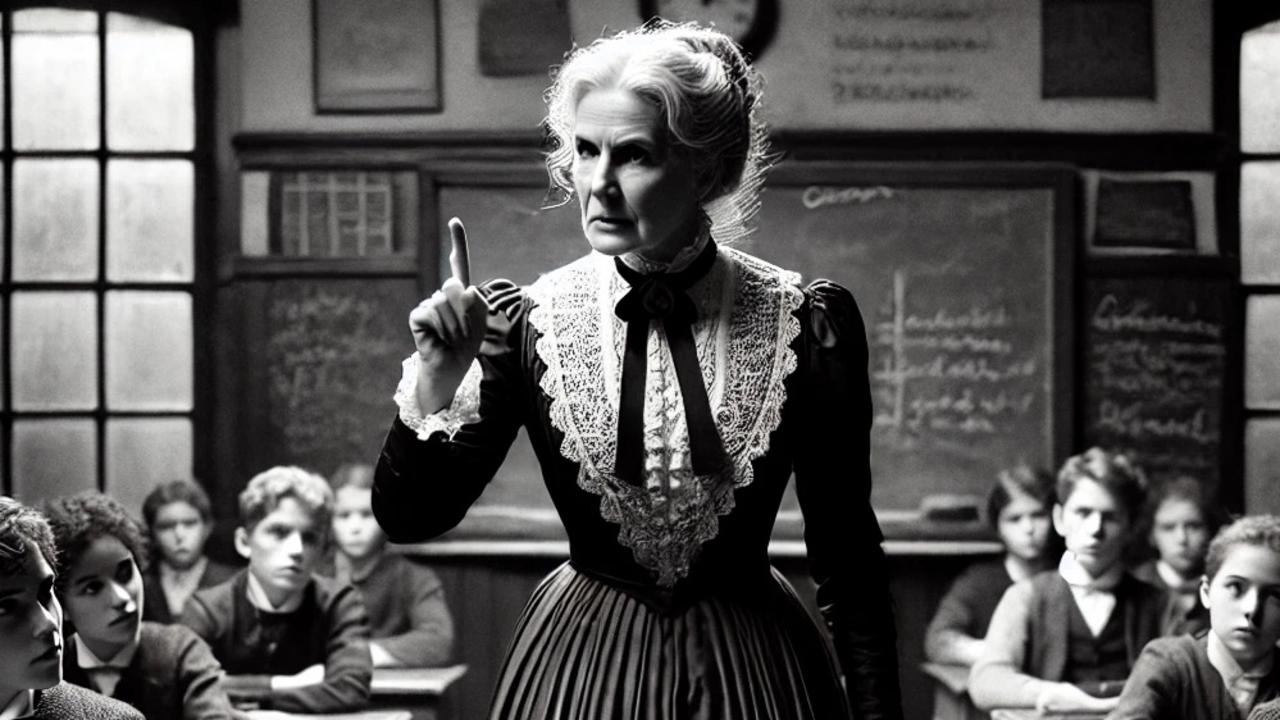
READING LEVEL: GREEN
School may have been strict for kids back in the old days, but it wasn’t much fun for teachers either.
An Australian museum has laid bare the mind-boggling and bizarre rules and regulations that Aussie teachers were subjected to in the past, as part of the nation’s schooling practices.
The Samford Museum in Brisbane’s west has released a curious list of teacher rules and student punishments at its state school from 1879 to 1974.
Female teachers had a particularly strict set of rules. Those employed in 1879 who got married would be fired immediately, while those working in 1915 were not allowed to wear bright coloured clothes or hang out in ice-cream parlours.
“You may not ride in a carriage or automobile* with any man unless he is your father or brother” was another rule, as was, “You, under no circumstances, dye your hair”.
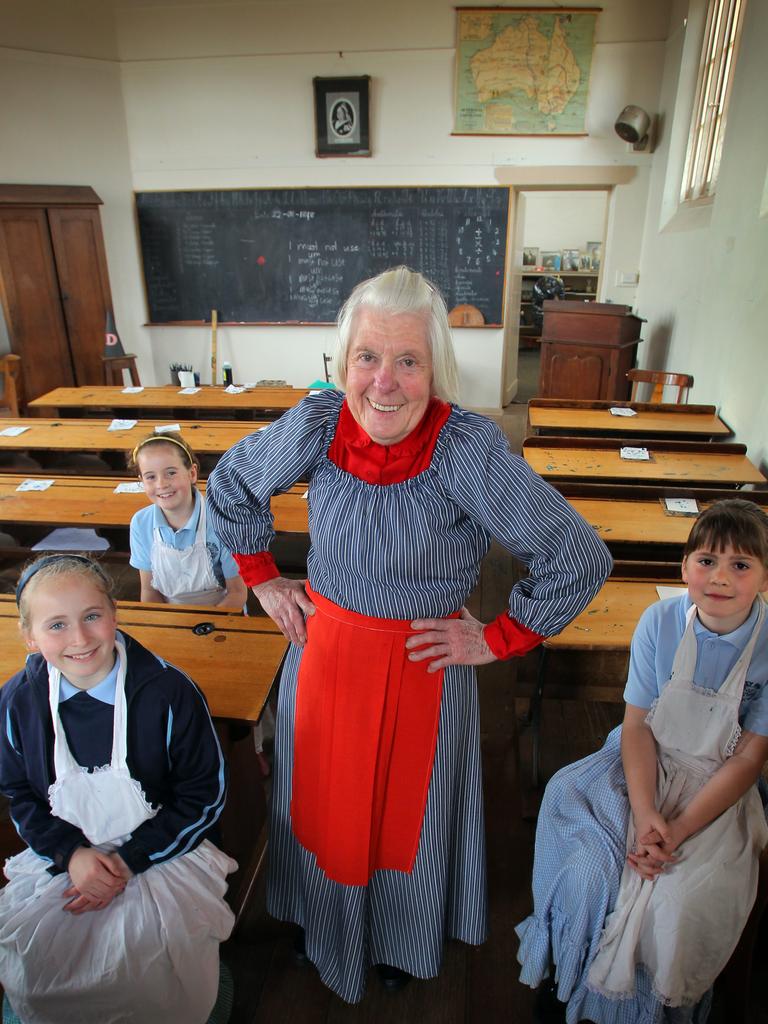
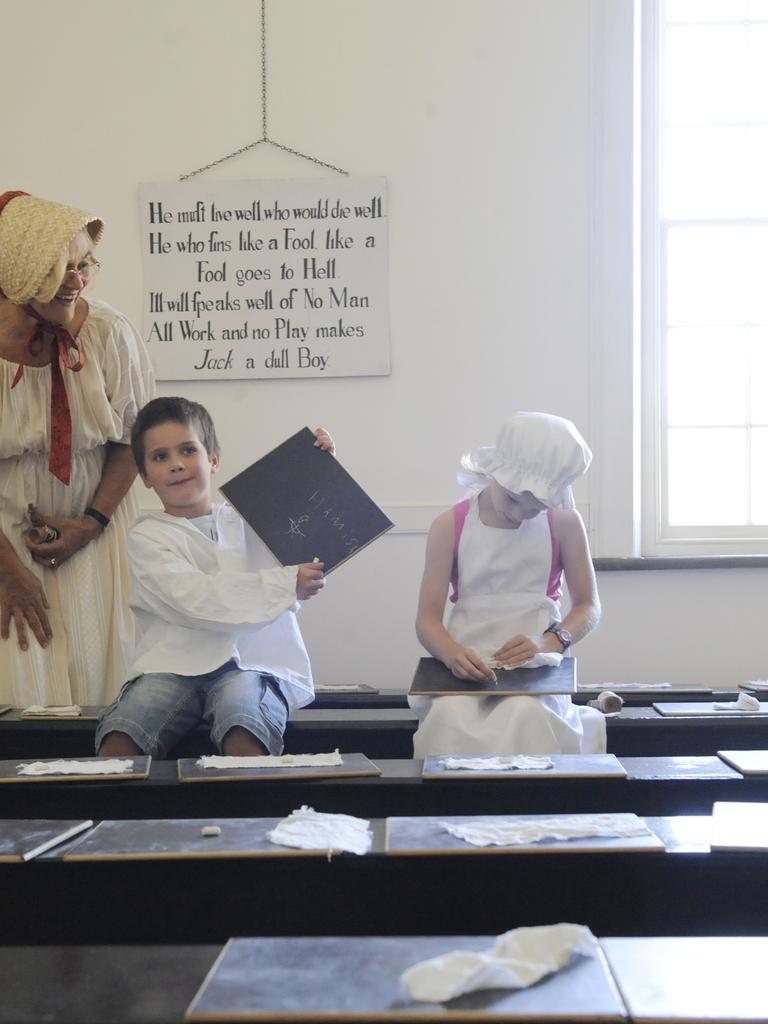
Here are some of the rules that teachers had to follow back in 1879 and 1915, when the world was a very different place.
RULES FOR TEACHERS – 1879
1. Teachers each day will fill lamps* (and) clean chimneys before beginning work.
2. Each teacher will bring a bucket of water and a scuttle* of coal for the day’s session.
3. Make your pens carefully, you may whittle nibs* to the individual taste of the children.
4. Men teachers may take one evening a week for courting purposes* or two evenings to attend church regularly.
5. After 10 hours in school, you may spend the remaining time reading the bible or other good books.
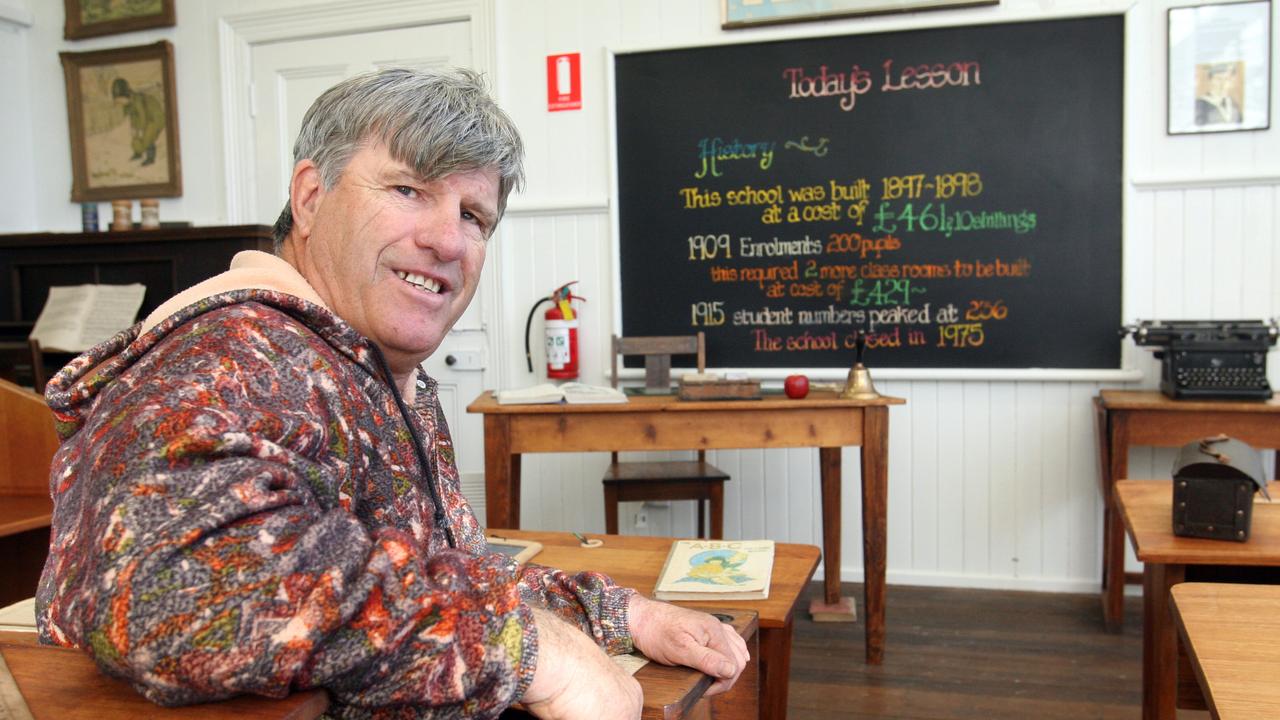
6. Women teachers who marry or engage in unseemly conduct* will be dismissed*.
7. Every teacher should lay aside*, from each pay, a goodly sum* for his benefit during his declining years* so that he will not become a burden on society*.
8. Any teacher who smokes, uses liquor in any form, frequents* pool and public halls or gets shaved in a barber’s shop, will give good reason to suspect his worth, intention, integrity and honesty.

RULES FOR WOMEN TEACHERS – 1915
1. You will not marry during the term of contract.
2. You are not to keep (the) company of men.
3. You must be home between the hours of 8pm and 6am unless attending a school function.
4. You may not loiter* downtown in ice cream parlours.
5. You may not travel beyond the city limits without the permission of the Chairman of the Board.
6. You may not ride in a carriage or automobile with any man, unless he is your father or brother.

7. You may not smoke cigarettes.
8. You may not dress in bright colours.
9. You under no circumstances dye your hair.
10. You must wear at least two petticoats* and your dresses must not be any shorter than two inches above the ankle.
11. To keep the school room clean, you must sweep the floor at least once daily, scrub the floor with hot soapy water at least once a week, clean the blackboard once a day and start the fire at 7am so that the room is warm when the children arrive.
PHYSICAL PUNISHMENT IN SCHOOLS
The Samford museum also displayed a student “punishment register*” from 1914 onwards, which included strokes to the hand, cuts and strokes of the cane.
Actions that were punishable by strokes of the cane included “telling lies repeatedly”, “continual talking” and “milking other people’s cows on road”.
“Racing horses on way home from school” and “taking money from school” were both listed as being punishable by four cuts.
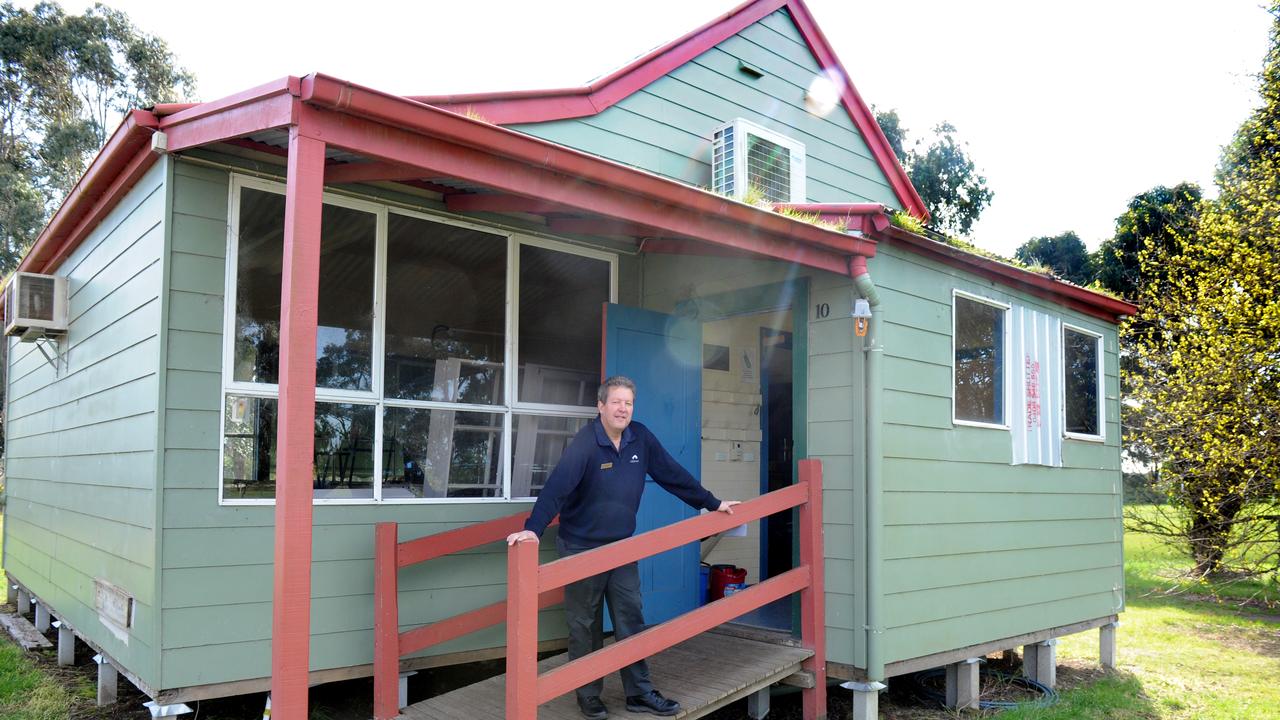
Nowadays, there is no set list of rules as to how students’ behaviour is dealt with. Instead, every situation is determined by the school principal depending on the circumstances.
Physical punishment in schools was officially banned across the states and territories at different times, ranging from 1985 in Victoria up until 2016 in Tasmania, according to the Australian Government’s Australian Institute of Family Studies (AIFS).
WHEN WAS PHYSICAL PUNISHMENT BANNED?
NSW– 1990 for government schools and 1995 for non-government schools
VIC – 1985 for government schools and 2006 for non-government schools
QLD – 1989 for government schools. In non-government schools the Criminal Code Act 1899 (s 280) still allows for “a person in the place of a parent, or for a schoolteacher or master, to use, by way of correction, discipline, management or control, towards a child or pupil, under the person’s care such force as is reasonable under the circumstances”

SA – 1991 in all schools
NT – 2015 in all schools. Previously, the Criminal Code Act allowed teachers in government schools to use physical punishment unless the student’s parents withheld their consent for such forms of punishment to be used
ACT – 1997 in all schools
WA – 2000 in government schools and 2015 in non-government schools. However, the Criminal Code Act (s 257) allows “for a parent or a person in the place of a parent, or for a schoolmaster” to use “such force as is reasonable under the circumstances”
TAS – 2016 for all schools
POLL
GLOSSARY
- automobile: car
- register: list
- fill lamps: before electricity, lamps were filled with flammable liquid such as kerosene or even animal fat which had a wick dipped into it. The wick was lit by flame and the liquid kept the flame burning throughout the day or night
- scuttle: a small bucket used for carrying coal. The coal would be used to light a fire in the classroom fireplace
- whittle nibs: teachers really had to make the pens as suggested, at the end of the pen was the nib, the pointed tip that the students dipped into a pot of ink before writing with
- courting purposes: to meet a suitable women to marry
- unseemly conduct: anything considered unladylike or “improper”
- dismissed: fired
- lay aside: save up
- goodly sum: a certain amount of money from his pay
- declining years: as he gets older
- burden on society: so he can afford to retire
- frequents: visits
- loiter: hang out
- petticoats: undergarments that are skirts
EXTRA READING
Purple Poppy Day for war animals
Map clue points to missing colony
WWII veteran turns 107 in SA
QUICK QUIZ
1. What are two rules teachers were subjected to in 1879?
2. How many petticoats did teachers have to wear in 1915?
3. Were female teachers allowed to get married?
4. Under what circumstances were female teachers allowed to travel in a car with a man in 1915?
5. What was punishment did school kids receive for milking other people’s cows on the street?
LISTEN TO THIS STORY
CLASSROOM ACTIVITIES
1. Teacher rules
These were very strict guidelines for teachers back in the 1800s and early 1900s, especially for female teachers!
Compare the list of rules for female teachers then, compared to now. Especially focus on the rules that employers can or can’t enforce now as to what teachers do in their own time.
| TEACHER RULES FOR WOMEN – 1915 | MODERN DAY RULES |
| 1. You will not marry during the term of contract. | |
| 2. You are not to keep company of men. | |
| 3. You must be home between the hours of 8pm and 6am unless attending a school function. | |
| 4. You may not loiter downtown in ice cream parlours. | |
| 5. You may not travel beyond the city limits without the permission of the chairman of the Board. | |
| 6. You may not ride in a carriage or automobile with any man unless he is your father or brother. | |
| 7. You may not smoke cigarettes. | |
| 8. You may not dress in bright colours. | |
| 9. You under no circumstances dye your hair. | |
| 10. You must wear at least two petticoats and your dresses must not be any shorter than two inches above the ankle. | |
| 11. To keep the school room clean, you must sweep the floor at least once daily, scrub the floor with hot soapy water at least once a week, clean the blackboard once a day and start the fire at 7am so that the room is warm when the children arrive. |
Time: allow 20 minutes to complete this activity
Curriculum Links: English, History, Personal and Social, Critical and Creative Thinking
2. Extension
Are there any rules that you think teachers should have to abide by when they are not at work teaching?
Is this a fair rule?
Do other jobs have rules for their staff when not at work?
Time: allow 10 minutes to complete this activity
Curriculum Links: English, Personal and Social, Critical and Creative Thinking
VCOP ACTIVITY
Vocabulary recycle
There is some vivid vocabulary being used in the article, and I am not just talking about the glossary words. Go through the article and highlight the high-level language that you are impressed by in yellow.
See if you can borrow two of these wow words to reuse in your own way.
Remember vocabulary is a great way to connect with the audience, but you need to think about who your audience is so you make great word choices.
Who will the audience be in your recycled sentences?


